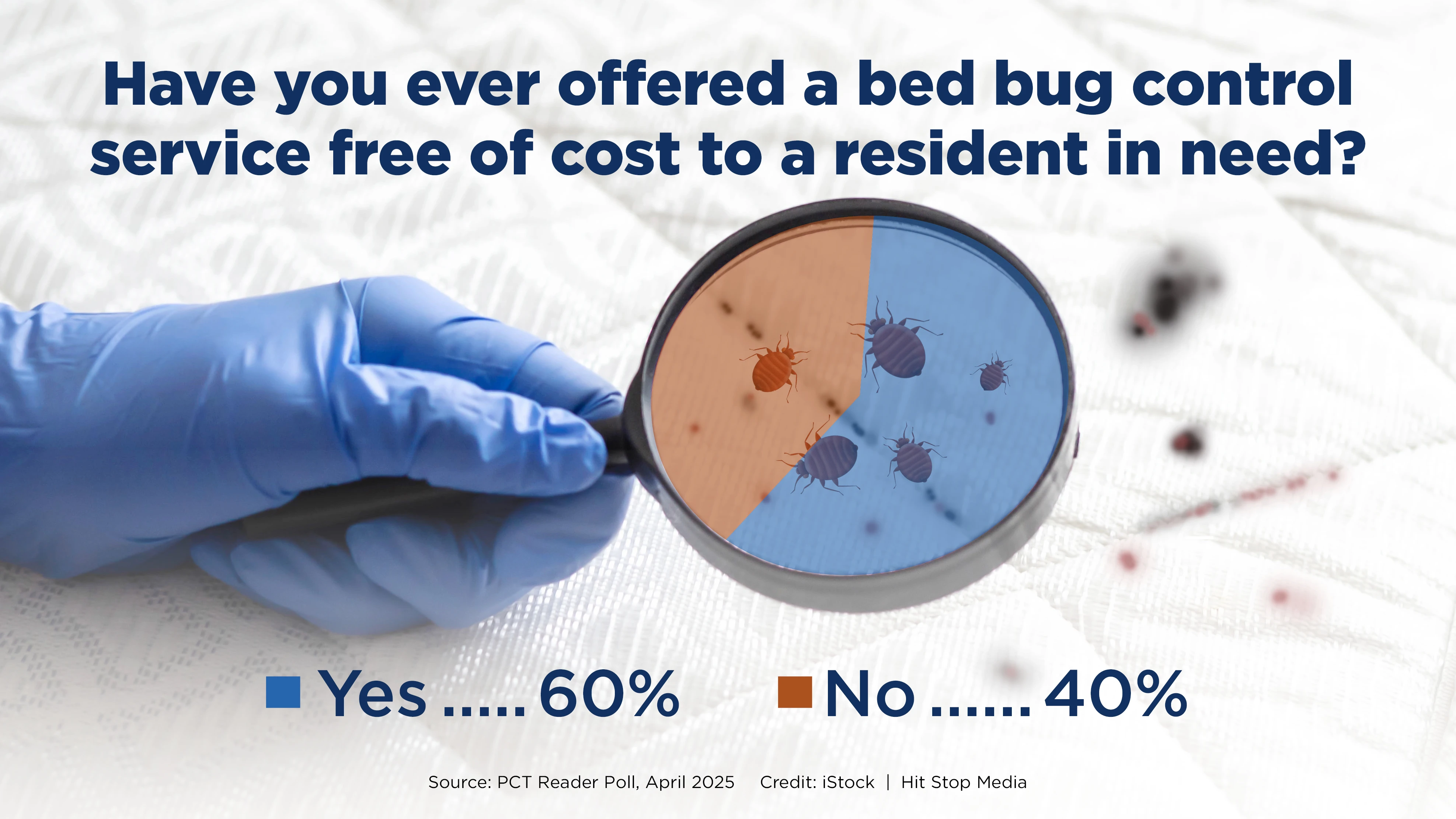This article appeared in the January 199 issue of PCT magazine.
Why is it that one building may experience seemingly constant pest activity while only a block away, another building with similar construction and operations experiences little or no pest activity?
I have been in poultry houses containing thousands of mice that would constantly rebound in numbers following intensive control efforts. Yet only a half mile down the road, another poultry house of the same age, production and exterior environment never had a mouse problem and remained relatively mouse-free for the four years I inspected the building. There are thousands of similar situations in our urban and rural communities. So what are the factors that affect pest presence and populations in and around buildings?
PEST PRESSURE. Part of the answer lies in what I like to refer to as "pest pressure." Pest pressure can be thought of as a simplified explanation as to the many different, and sometimes very complex, factors that may contribute towards a building or area sustaining pest activity or infestations. Let’s examine pest pressure factors in two common examples: a food manufacturing plant and a residential home.
FOOD PLANT PRESSURE. Large com-mercial structures that manufacture or process food are typically under heavy pest pressure. The factors responsible for this pressure include: 1) the immediate exterior surroundings; 2) incoming bulk and packaged ingredients; 3) incoming non-food supplies; 4) neighboring prop-erties; 5) incoming delivery vehicles (rail-cars, trailers, containers, etc.); and 6) em-ployees. Each of these for a food plant typically occurs or exists on a large scale.
Although pests arrive periodically with supplies and employees, the immediate exterior surroundings are likely to pro-duce the most pest pressure for the food plant, especially when you couple a plant’s exterior with the plant’s operational factors. Food plants typically create copious amounts of heat, moisture, light and concentrated food and waste odors 24 hours a day and sometimes for 365 days a year. As every pest management professional knows, such en-vironmental cues are highly attractive to insects, rodents, birds and most other wild animals foraging in the neighborhood on a regular basis.
Of course, the pressure is affected by the specific exterior environment. For example, one food plant I inspect regularly is surrounded by a creek and thick woods along two walls of the plant. Another wall is bordered by a poorly maintained crop field. As this plant manufactures a grain product, the pressure on this plant by stored product pests and rodents is quite significant.
Additionally, food plants and other large complex buildings create pest pressure them-selves. For example, bird pressure might exist on a food plant only because the enormous flat roof doesn’t drain water properly and pigeons find this a convenient place to obtain their critical daily water needs. Or, due to negative air pressure of many food plants, the building may literally suck flies and small grain insects into the building as they fly nearby the plant’s exterior doors. Then add to this the amount of concealment and harborage available to pests once they are inside a large industrial building. Literally, millions of nooks and crannies within the walls, ceilings, equipment, utility chases, conduit, furniture and other areas result in substantial challenges for pest management professionals.
RESIDENTIAL PEST PRESSURE. Although on a smaller scale, pest pressures in residential environments can also be relatively high. Factors similar to those effecting the food plant example discussed above affect private homes and apartments. Consider a house that is surrounded by mature woods, lush landscaping, a nearby pond and neighbors that feed pets and wild birds in their back yards. Here, habitat and resources come together for both vertebrates and invertebrates. The pest pressure exerted on this house by carpenter ants, woodpeckers, rodents, urban wildlife and many other occasional invaders is often significant.
PREDICTING AND ANALYZING PRESSURE. Analyzing pest pressures need not always be complex. It should be obvious that the apartments or offices in direct proximity to a cockroach-infested restaurant in a city might be under heavier cockroach pressure than those apartments several floors removed from the restaurant. A food plant with an ill-managed, pest-infested feed mill neighbor will likely suffer obvious consequences.
Nor is pest pressure always predictable. There are all sorts of exceptions as well as site- and species-specific factors that can also be at play. And some factors may not be recognizable. Certain homes within new suburban developments that lack mature trees, woodland cover, or waterways might be subject to heavy and repeated ant or termite pressure due to environmental factors and conditions prior to the con-struction of the housing development.
So, as pest professionals, what can we do to reduce pest pressure on a building or an area? Well, in those cases where the heaviest pressure is coming from a natural exterior environment, little can be done to decrease the pressure itself. Via good inspections and analysis, however, we can identify the pressure and educate our clients as to the different avenues pests enter, arrive or are shipped to an account. We must never give up the fight to inform the public as to the importance of decreasing the attractiveness of the immediate building exterior via cultural control efforts. This includes eliminating exterior junk and clutter, maintaining vegetation, draining accumulating water, removal of food resources and the like.

Explore the January 1999 Issue
Check out more from this issue and find your next story to read.
Latest from Pest Control Technology
- Target Specialty Products, MGK Partner for Mosquito Webinar
- Cockroach Control and Asthma
- FORSHAW Announces Julie Fogg as Core Account Manager in Georgia, Tennessee
- Envu Introduces Two New Innovations to its Pest Management Portfolio
- Gov. Brian Kemp Proclaimed April as Pest Control Month
- Los Angeles Ranks No. 1 on Terminix's Annual List of Top Mosquito Cities
- Kwik Kill Pest Control's Neerland on PWIPM Involvement, Second-Generation PCO
- NPMA Announces Unlimited Job Postings for Members





